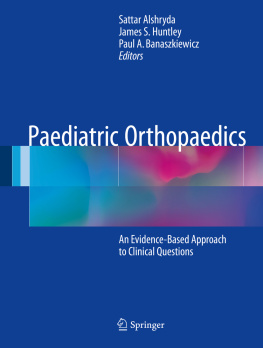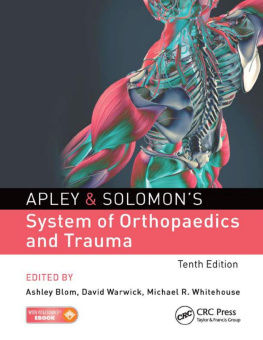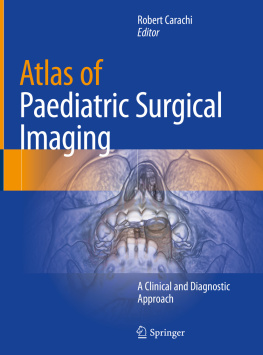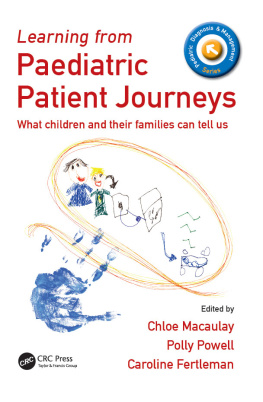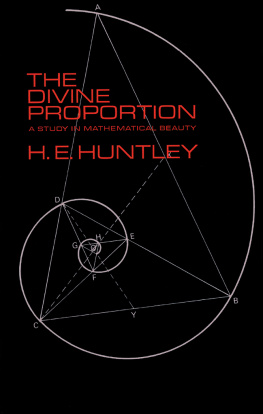Part I
General Guidance
Springer International Publishing Switzerland 2017
Sattar Alshryda , James S. Huntley and Paul A. Banaszkiewicz (eds.) Paediatric Orthopaedics 10.1007/978-3-319-41142-2_1
1. Introduction to Evidence-Based Orthopaedics
Sattar Alshryda 1
(1)
Royal Manchester Childrens Hospital, Manchester, UK
(2)
Department of Surgery, Sidra Medical and Research Center, Doha, Qatar
(3)
Queen Elizabeth Hospital, Gateshead, UK
Sattar Alshryda (Corresponding author)
Email:
Abstract
Practising surgeons may be unable to keep up with current practice what seems up to date today can be redundant tomorrow. In paediatric orthopaedics, and the setting of a busy clinical practice, it is challenging to find time to retrieve the best available studies, let alone analyse them, or synthesise the resulting information into a form applicable to ones own practice. We are hardly alone in this regard (eg, Narayanan and Wright [1]), so this book is a collective effort to probe the common questions arising in our speciality and look critically for answers within the literature. In this work, we are proud to have brought together the thinking of more than fifty leading paediatric orthopaedic surgeons to assemble the evidence underpinning elements of current practice. The approach has been that of the evidence-based medicine pragmatist, written by frontline practitioners.
Keywords
Orthopaedics Levels of evidence Grades of recommendation
Practising surgeons may be unable to keep up with current practice what seems up to date today can be redundant tomorrow. In paediatric orthopaedics, and the setting of a busy clinical practice, it is challenging to find time to retrieve the best available studies, let alone analyse them, or synthesise the resulting information into a form applicable to ones own practice. We are hardly alone in this regard (eg, Narayanan and Wright []), so this book is a collective effort to probe the common questions arising in our speciality and look critically for answers within the literature. In this work, we are proud to have brought together the thinking of more than fifty leading paediatric orthopaedic surgeons to assemble the evidence underpinning elements of current practice. The approach has been that of the evidence-based medicine pragmatist, written by frontline practitioners.
Evidence-based medicine is the conscientious, explicit, and judicious use of current best evidence in making decisions about the care of individual patients (Sackett et al. []): Assess the patient to determine the clinical issues. Ask a clear question to be pursued. Acquire the evidence. Appraise the evidence for its worth/validity. Apply the evidence to the particular patient. Broadly, this has been the suggested approach for the text, albeit with generalisation of the patient, and followed by a synthesis of the conclusions according to both level of evidence and grade of recommendation.
Editing this book has been a challenge on several levels. Authors vary in their understanding, experience of evidence-based medicine and modes of analysis of the literature. As far as possible we have sought to maintain the general format and quality of questions and chapters, whilst recognizing that, as with most multi-author texts, there are bound to be differences in emphasis, analysis and style. We have tried not to allow our own prejudices to influence the authors open hand to potentially contentious areas of practice.
In some areas, rather than there being a definitive guide to practice, it is clear that there is a lack of evidence; confusion may simply represent the current state of knowledge, not least because: development of new treatment choices has far outpaced our capacity for determining what procedures are beneficial (Wenger []). Paediatric orthopaedics, as a field of endeavour, has moved forward at a rapid pace over the last two decades, often outstripping our abilities to define best practice per se . Defining a dearth of evidence is a natural pre-requisite to addressing it in the future. Conversely where evidence does exist, it is vital that those who care for children keep up to date.
We are immensely grateful to all the authors who have given so generously of their time, effort and expertise in assembling the material for this book.
References
Narayanan U, Wright JG. Evidence-based medicine: a prescription to change the culture of pediatric orthopaedics. J Pediatr Orthop. 2002;22:2778. PubMed
Sackett DL, Rosenberg WMC, Gray JAM, Haynes RB, Richardson WS. Evidence-based medicine: what it is and what it isnt. BMJ. 1996;312:712. CrossRef PubMed PubMedCentral
Wright JG, Kocher MS, Sanders JO. Evidence-based pediatric orthopaedics: an introduction, part 1. J Pediatr Orthop. 2012;32:S8390. CrossRef PubMed
Wenger DR. Limitations of evidence-based medicine: the role of experience and expert opinion. J Pediatr Orthop. 2012;32:S18792. CrossRef PubMed
Springer International Publishing Switzerland 2017
Sattar Alshryda , James S. Huntley and Paul A. Banaszkiewicz (eds.) Paediatric Orthopaedics 10.1007/978-3-319-41142-2_2
2. Critical Appraisal of a Published Paper
Raymond Pollock 1
(1)
University Hospital of North Tees and Hartlepool, Hardwick Road, Stockton on Tees, TS19 8PE, UK
(2)
Department of Surgical and Perioperative Sciences, Ume University, 90187 Ume, Sweden
Raymond Pollock (Corresponding author)
Email:
Arkan S. Sayed-Noor
Email:
Abstract
Critical appraisal is a systematic process used to identify the strengths and weaknesses of a research article. It enables the validity of research findings to be determined. It is just one step in the process of evidence based medicine the use of best evidence in making decisions about patient care. The validity of a research study depends on its design and quality. Study designs are classified according to a hierarchical ranking called levels of evidence. To facilitate critical appraisal, checklists that ask questions about the research have been developed enabling the reader to judge its validity. Critical appraisal checklists can be divided into generic and study type specific lists. In this chapter a generic tool is described that is appropriate for the novice reviewer. For the experienced reviewer study specific checklists for each of the main study types are then described. Not only does this chapter provide the tools needed for critical appraisal of published work, it should also be of help when conducting and publishing research by ensuring that the checklists for that study type are taken into account during the design phase.
Keywords
Critical appraisal Evidence based medicine Hierarchy of evidence Checklist Case report Case series Cross-sectional study Case control Cohort Randomized controlled trial Systematic review Meta-analysis
Critical appraisal (CA) is a systematic process used to identify the strengths and weaknesses of a research article and thereby determine the studys validity. It is important when reading a published paper to keep a degree of skepticism. This means being open-minded and willing to be convinced but only if authors can adequately back up their claims. The critical reader is not put off by the limitations of a study but will expect authors to interpret their results in a way that takes account of the limitations.

